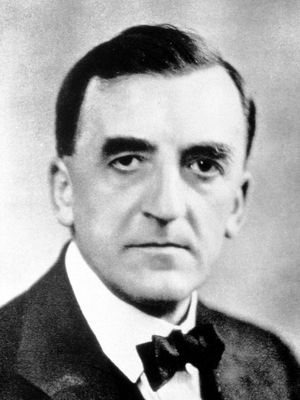Major Greenwood facts for kids
Quick facts for kids
Major Greenwood
|
|
|---|---|

Major Greenwood
|
|
| Born | 9 August 1880 |
| Died | 5 October 1949 (aged 69) |
| Nationality | British |
| Awards | Weldon Memorial Prize (1926) |
| Scientific career | |
| Fields | Epidemiology |
Major Greenwood (born August 9, 1880 – died October 5, 1949) was an important English scientist. He was an epidemiologist and a statistician. An epidemiologist studies how diseases spread and how to control them. A statistician uses numbers and data to understand things.
Contents
Early Life and Education
Major Greenwood was born in Shoreditch, a part of London. He was the only child of Major Greenwood, who was a doctor. His father's first name was also "Major," not a military rank.
Greenwood went to Merchant Taylors' School, Northwood. After that, he studied medicine at University College London and the London Hospital. He finished his medical studies in 1904.
A New Path in Science
After working briefly with his father, Major Greenwood decided that being a regular doctor was not for him. He became an assistant to a scientist named Leonard Erskine Hill. Hill was a physiologist, someone who studies how living things work.
Greenwood soon became very interested in statistics. Statistics is the science of collecting and analyzing numbers. His first scientific paper on statistics was published in 1904.
Working with Data
In 1910, Greenwood became a statistician at the Lister Institute. Here, he worked on many different problems. One important project looked at how well vaccinations worked. He did this work with another statistician, Udny Yule.
During the First World War, Greenwood first served in the army's medical group. Later, he led a medical research team for the government. He studied health problems that factory workers faced. He and Yule also wrote an important study about accidents.
In 1919, Greenwood joined the new Ministry of Health. His job was to handle medical statistics for the country. He wrote several papers with a scientist named Ethel Newbold.
Professor of Epidemiology
In 1928, Major Greenwood became the first professor of Epidemiology and Vital Statistics at the London School of Hygiene and Tropical Medicine. Vital statistics are important records like births, deaths, and marriages. He stayed there until he retired in 1945.
He built a team of researchers, and one of the most important was Austin Bradford Hill. Greenwood helped Hill's career, just as Hill's father had helped Greenwood's.
Awards and Recognition
Major Greenwood received many honors for his work.
- In 1927, the Royal Society gave him the Buchanan Medal.
- In 1928, he was elected a Fellow of the Royal Society. This is a very high honor for scientists.
- In 1934, he became the President of the Royal Statistical Society.
- In 1945, he received the Guy Medal in Gold from the Royal Statistical Society.
The Royal Society recognized him for using statistics to solve problems in medicine and public health. They noted his work on how diseases spread and how he helped plan important health studies.
Lasting Impact
Major Greenwood did a lot of research and held important positions in medical statistics. He also wrote about the history of his field.
Austin Bradford Hill said that Greenwood's biggest contribution was his way of thinking. He brought a new "statistical approach" to medicine. At the time, this was a new idea and people were often suspicious of it. Greenwood always fought for logic, accuracy, and using "little sums" (simple calculations) to understand big health problems.
His name is still used in science today. The Greenwood formula helps scientists understand how long people might survive certain illnesses. The Greenwood statistic is another method he invented. It was used to find patterns in how genes are placed on chromosomes. This discovery helped lead to new ideas about epigenetics, which is now seen as very important in how living things grow and change.

